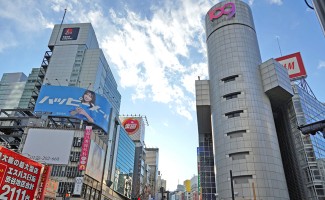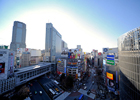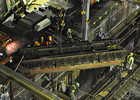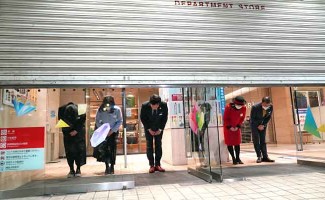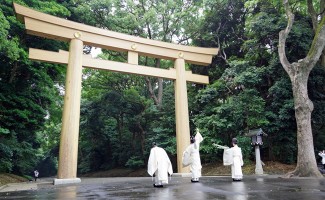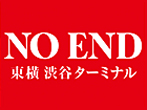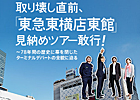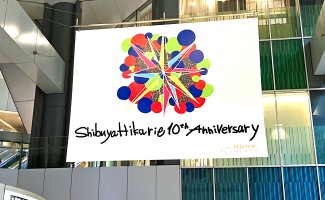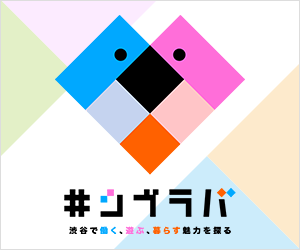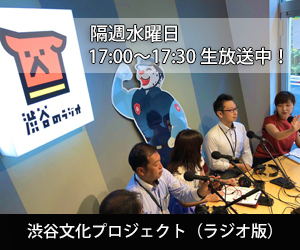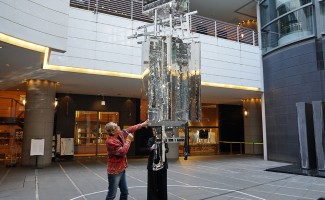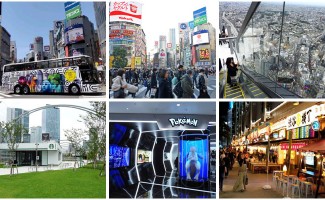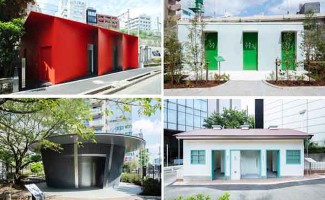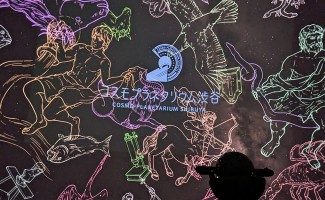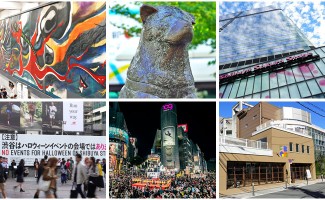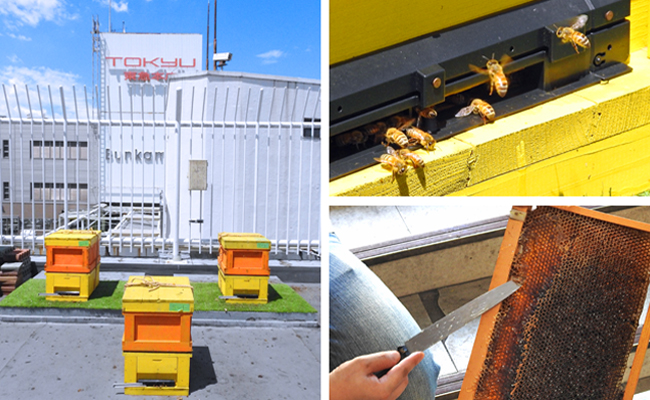
【Report】 Cover "Shibuya's Honey Squeeze" at Shibuya Tokyu Main Store Roof in the hot weather!
Wednesday passed August 9 (Wednesday). In Shibuya it got a harsh heat from morning and after 0 pm it exceeded 38 degrees and the most hot weather this year was recorded.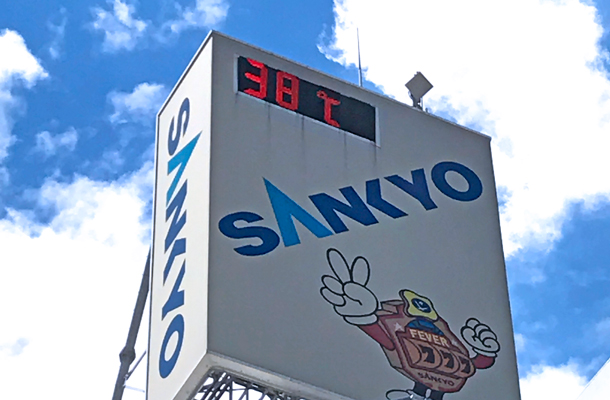 While the sweat is oozing just by standing, on the roof of Shibuya · Tokyu department store head office, "Honey throttling" which is the last beekeeping activity of this year was held and I watched the situation.
While the sweat is oozing just by standing, on the roof of Shibuya · Tokyu department store head office, "Honey throttling" which is the last beekeeping activity of this year was held and I watched the situation.
I heard that there are many people who are surprised to hear that they are beekeepers in Shibuya. Actually, inspired by the "Ginza Bee Project", which is known as the forerunner of "Urban Beekeeping", "Shibuya Bee Project" was established with volunteers on March 8, 2011. Originally it was done on a small scale on the roof of a building in Sakuragaoka Town, but after that, we proactively promoted activities jointly with this project and La Veille (head office: Suginami Ward), which manages honey specialty store "La Bueille" At present, beekeeping activities are being carried out at rooftops of seven buildings in total, mainly Shibuya area such as Shibuya, Ebisu, Aoyama.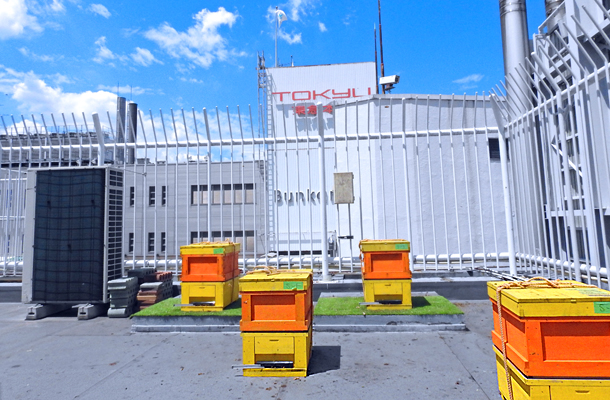 One of the seven places is the rooftop of Tokyu department store head office. At the Tokyu head office, which marks the 50th anniversary of its foundation, from the idea of offering a place to interact with nature in the city, in addition to the "bee project", in May this year a paddy field will be built on the rooftop and the neighboring Kanan elementary school We raise rice plants with students of the other, we are focusing on "environmental conservation" and "regional cooperation".
One of the seven places is the rooftop of Tokyu department store head office. At the Tokyu head office, which marks the 50th anniversary of its foundation, from the idea of offering a place to interact with nature in the city, in addition to the "bee project", in May this year a paddy field will be built on the rooftop and the neighboring Kanan elementary school We raise rice plants with students of the other, we are focusing on "environmental conservation" and "regional cooperation".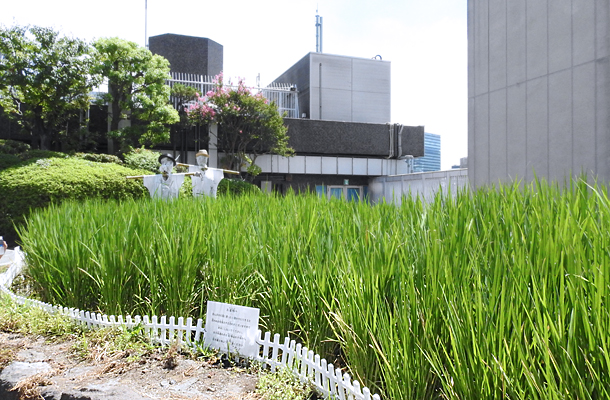 Three months after rice planting, rice growing steadily toward the blue sky of summer. In autumn we will do harvesting and threshing experiences with children who participated in rice planting and also experience to eat rice harvested.
Three months after rice planting, rice growing steadily toward the blue sky of summer. In autumn we will do harvesting and threshing experiences with children who participated in rice planting and also experience to eat rice harvested.
Well, let's return the story to the bee. There are 4 boxes of beehives of bees set up in March this year. Approximately 40,000 bees in one nest box and approximately 160,000 bees in four boxes. Where is the source of honey and pollen in the big city, Shibuya? Actually, "Yoyogi Park" boasts the largest size in Tokyo, spreading about 1 km ahead. Besides that, there are also many street trees and general household horticultural plants in Shibuya, as well as Meiji Shrine and Meguro River neighboring Yoyogi Park. Beginning in early spring, there are plenty of nectar sources for bees such as Fuji, Toshi, Sarusuberi, Clover, Sunflower, Lavender, Cosmos, from spring to summer, it is not a bad environment at all.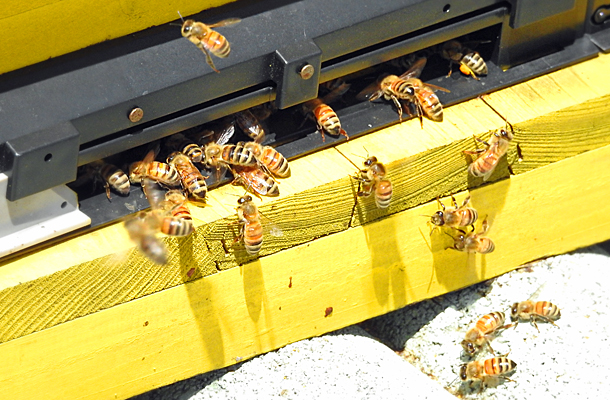 Still another city beekeeping has its advantage. Recently worldwide disappearance of bees and mass death etc are regarded as problematic, but the primary cause of it is said to be "Neonicotinoid pesticide" widely spread all over the world. There are probably many people who have heard the news that farmers cultivating fruits are plagued by insufficient bees to help pollinate. The movement to prohibit the use of "neonicotinoid pesticide" already in the EU is progressing. Meanwhile, large cities such as Shibuya are crowded with a lot of people, so it is said that relatively agricultural chemical spraying is not done and it can be said that it is an oasis that can safely collect honey for bees. In addition, there may be people who think that it would be better to do all the beekeeping in the city, but the nectar source in Shibuya is the limit of the current number of nest boxes at most. If it increases more than now, it seems that it does not mean that you just have to increase such as decreasing the amount of honey per box, and increasing the number of residents who feel anxiety about bee puncture.
Still another city beekeeping has its advantage. Recently worldwide disappearance of bees and mass death etc are regarded as problematic, but the primary cause of it is said to be "Neonicotinoid pesticide" widely spread all over the world. There are probably many people who have heard the news that farmers cultivating fruits are plagued by insufficient bees to help pollinate. The movement to prohibit the use of "neonicotinoid pesticide" already in the EU is progressing. Meanwhile, large cities such as Shibuya are crowded with a lot of people, so it is said that relatively agricultural chemical spraying is not done and it can be said that it is an oasis that can safely collect honey for bees. In addition, there may be people who think that it would be better to do all the beekeeping in the city, but the nectar source in Shibuya is the limit of the current number of nest boxes at most. If it increases more than now, it seems that it does not mean that you just have to increase such as decreasing the amount of honey per box, and increasing the number of residents who feel anxiety about bee puncture.
This is the third honorable honey from spring (honey stop), this season is also the last. Compared with the spring and early summer with many flowers, the nectar source is exhausted after August, and the number of hornets that are natural enemies increases. In addition, for the purpose of overwinter diapause, in order to increase the number of bees sufficiently to concentrate on egg-laying child rearing, after August it is said to move the nest box to a quiet place without honey.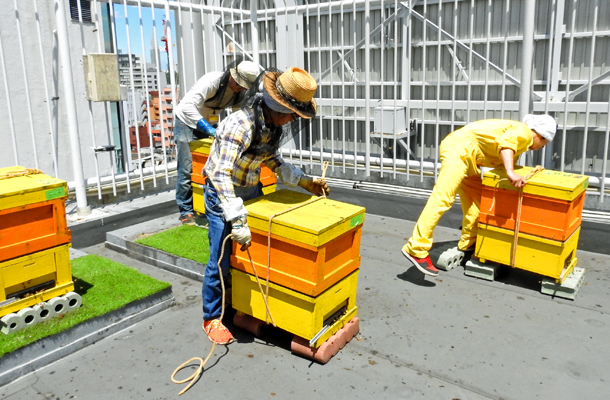 Staff of beekeepers who prepare to move the nest box.
Staff of beekeepers who prepare to move the nest box.
By the way, the bees of Shibuya are brought to our own beekeeping place in La Tayu, located in Takao, and back again to Shibuya next spring. Of course, bee's life expectancy is said to be about 40 days, so bees in hive bars will never come back as they are. Their grandchildren ... despite fewer bees reducing the number, they get over the hard winter and come back to Shibuya. Just watching the appearance of storing honey necessary for overwintering in order to connect the baton to the next-generation bee, the heart is washing anything. I think that there are certainly many people who are afraid of stabbing when they hear bee, but bees are quirky in character, as long as nests are not attacked, they are less pricked. Even in this interview we approached a pretty nest box, photographed and interviewed, but it did not seem to be attacking.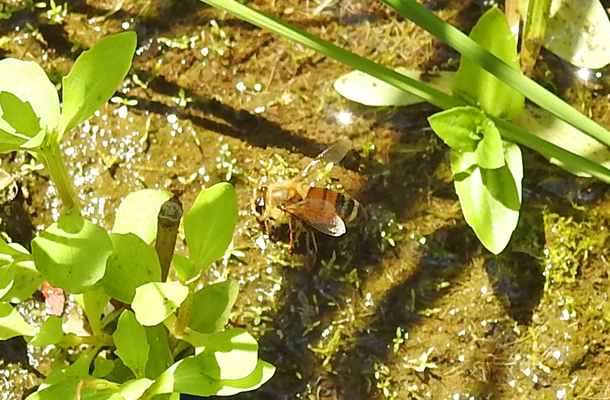 In the rooftop paddy field, the appearance of a bee that supplies hydration is also seen, and it can be seen that the combination of beekeeping and rice cultivation works well as an ecosystem.
In the rooftop paddy field, the appearance of a bee that supplies hydration is also seen, and it can be seen that the combination of beekeeping and rice cultivation works well as an ecosystem.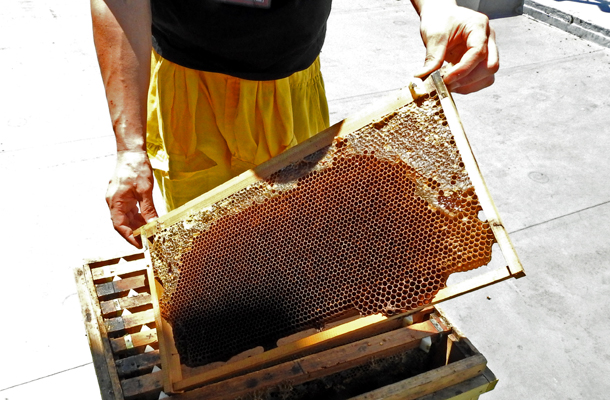 For the procedure of nectar, first remove the nest frame from the nest box.
For the procedure of nectar, first remove the nest frame from the nest box.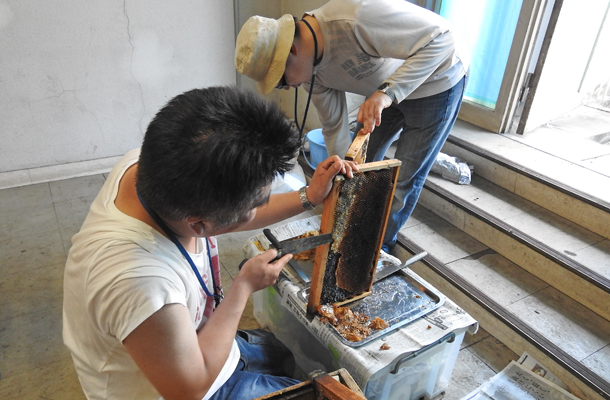
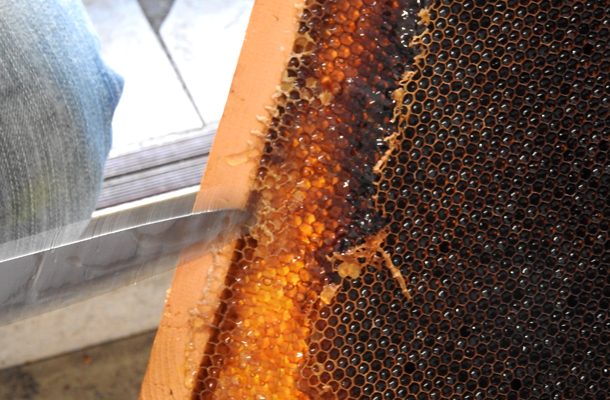 Scrape the "honey pig" covered with beeswax with a knife and make work to make honey easier.
Scrape the "honey pig" covered with beeswax with a knife and make work to make honey easier.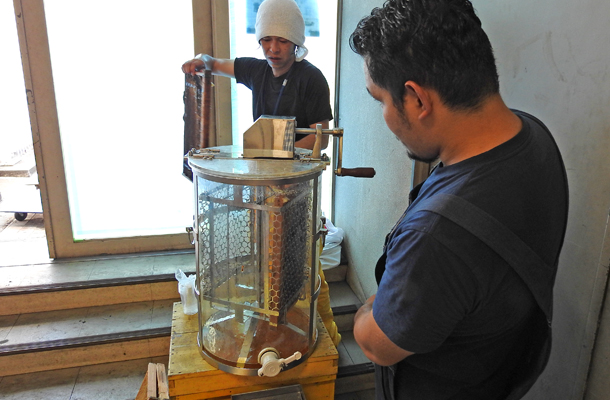 After that, set the nest frame in the centrifuge and separate the nest and honey while rotating it manually. Honey stored in the separator is removed from the valve to remove dust and dust, and filtration is performed. The amount of honey this time was about 40 kg, about 120 kg of honey was squeezed in 3 times of season's tanning work.
After that, set the nest frame in the centrifuge and separate the nest and honey while rotating it manually. Honey stored in the separator is removed from the valve to remove dust and dust, and filtration is performed. The amount of honey this time was about 40 kg, about 120 kg of honey was squeezed in 3 times of season's tanning work.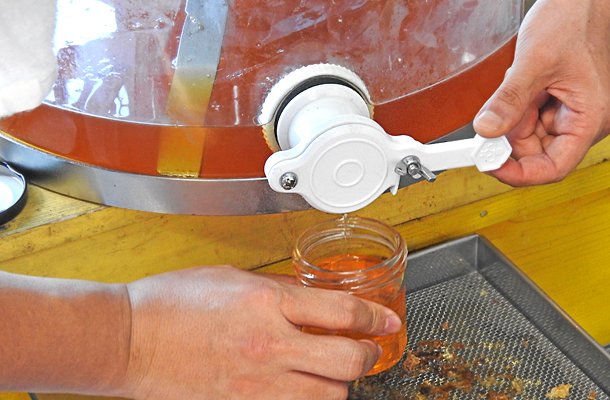 We tried freshly picked honey before filtering, and the refreshing sweetness spread in my mouth. Even more surprised is that the fragrance is enormously fragrant compared to the commercial product. I felt the taste to stimulate such a sensation like flower scent rushes up all at once from mouth to nose. Incidentally, it is said that honeys such as crisp berries are mainstream during this period.
We tried freshly picked honey before filtering, and the refreshing sweetness spread in my mouth. Even more surprised is that the fragrance is enormously fragrant compared to the commercial product. I felt the taste to stimulate such a sensation like flower scent rushes up all at once from mouth to nose. Incidentally, it is said that honeys such as crisp berries are mainstream during this period.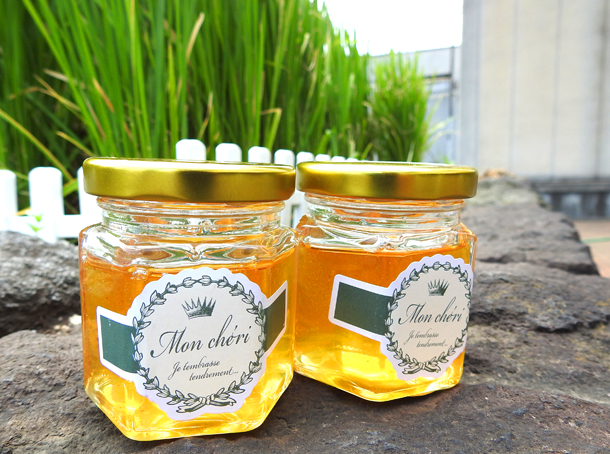 After honey preparation, filtration is performed repeatedly to remove dust before the honey is commercialized, and then inspection such as component analysis is performed. Products are shipped to the store as early as a month or two, as they are shipped after safety has been confirmed. This time, it is said that the honey that has been collected will be sold at the Shibuya Hikarie ShinQ's 'La Beille Shibuya Hikarie store from around September. We can not wait for "Shibuya-made honey" to line up at the storefront.
After honey preparation, filtration is performed repeatedly to remove dust before the honey is commercialized, and then inspection such as component analysis is performed. Products are shipped to the store as early as a month or two, as they are shipped after safety has been confirmed. This time, it is said that the honey that has been collected will be sold at the Shibuya Hikarie ShinQ's 'La Beille Shibuya Hikarie store from around September. We can not wait for "Shibuya-made honey" to line up at the storefront.

Editorial department · Fuji Itakashi
Shibuya registrar. In addition to Shibuya of Culture information, seasonal news and topics, it will spell write that feel every day.
